Help! My Dog is Out of Control [Practical Solutions]
At wit’s end with a dog that seems to have endless energy and a knack for mischief? Whether it’s chewing up furniture, barking incessantly, or just general disobedience, having an “out of control” dog can be emotionally draining and downright stressful.
But don’t lose hope just yet!
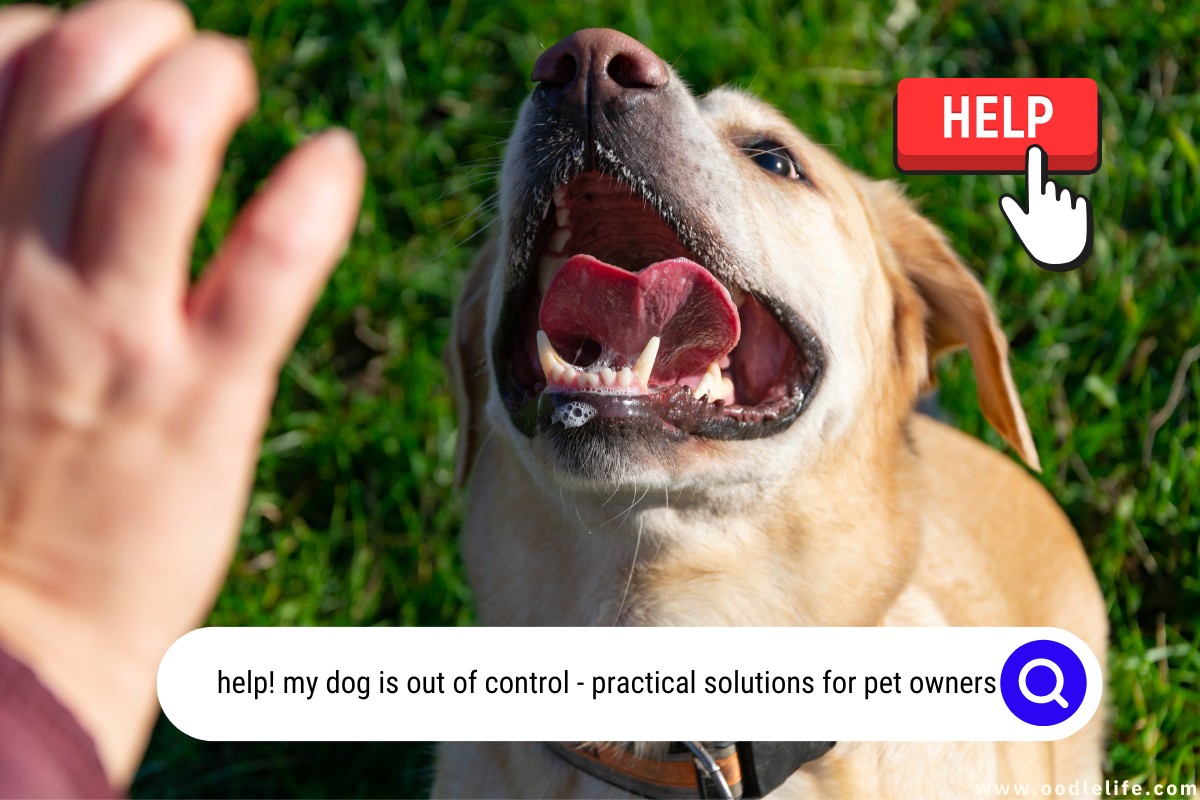
The good news is that unruly behavior is often a symptom, not a sentence. In this article, we’ll explore the reasons behind your dog’s wild antics and offer practical solutions to help bring peace and order back to your household.
Identifying the Problem
Has your once perfectly well-behaved dog suddenly transformed into an unruly, unstoppable force? Whether they’re barking incessantly, chewing on your favorite shoes, or displaying aggression towards other dogs, out-of-control behavior can be a sign that your dog is experiencing an underlying issue. Identifying the problem is critical to finding a solution and restoring the harmony in your household.
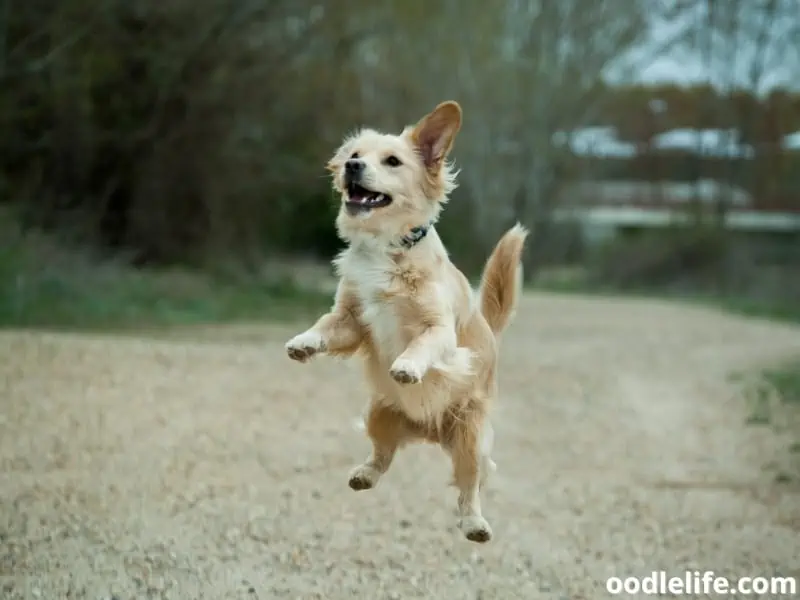
One common cause for this behavior could be fear. For example, if your dog recently had a bad interaction with another animal, they might become more aggressive to protect themselves in the future. Like humans, dogs can develop hyperactivity disorder or hyperkinesis.
This condition can cause your dog to seemingly never run out of energy or focus, making them more challenging to manage.
Another possible culprit is cognitive dysfunction, also known as doggy dementia. This condition affects older dogs and can cause confusion and a lack of understanding of their environment, leading to unpredictable behavior. It’s essential to consider potential medical conditions or health issues that could be contributing factors.
For example, a dog with a brain tumor may act erratically due to the physical changes in their brain.
The key is observing your dog’s behavior and pinpointing anything unusual or different from their baseline demeanor. Look for patterns, as well as any external influences that may be triggering these new habits. Also, do not underestimate the power of a good old-fashioned check-up with your veterinarian.
They can help identify if your dog’s out-of-control behavior is stemming from a health issue or if it’s a behavioral concern that needs addressing.
Remember, Rome wasn’t built in a day, and neither was a perfectly well-behaved dog (or any dogs in Rome, for that matter). The first step to addressing out-of-control behavior is identifying the problem and understanding the underlying cause. So, keep a keen eye and a curious mind as you navigate this wild and wacky journey we call “dog ownership.”
Understanding Your Dog’s Breed and Behavior
When it comes to our furry friends, not all dogs are created equal. Different breeds have distinct personalities, energy levels, and behaviors. So, before you label your pup as “out of control,” it’s essential to understand their breed and the common behaviors associated with it.

For instance, herding breeds like Border Collies or Australian Shepherds are known for their high energy levels and need for mental stimulation. If they don’t get enough exercise and mental challenges, they may resort to destructive behaviors out of boredom. On the other end of the spectrum, you have toy breeds like Chihuahuas, who may not require a marathon of physical activity but can be prone to anxiety and clinginess.
Zoomies, those frantic, impromptu sprints around the house or yard, are a natural way for dogs to release pent-up energy. These bursts of excitement are typically harmless but understanding when your dog is more likely to have a “zoomie” episode can help manage them better.
Let’s not forget about puppies, the adorable little bundles of endless energy who love to explore their environment. Chewing, digging, and jumping are all natural behaviors for puppies, although they may wreak havoc on your home. Patience and proper training are necessary to help your fur-baby learn the ropes.
Now, certain dog behaviors can stem from anxiety, such as excessive barking, destructive chewing, or displaying aggression. It’s crucial to recognize the signs of anxiety in your dog and provide them with the appropriate support and training.
To sum it up, understanding your dog’s breed and their specific behavior patterns can help you manage their energy, excitement, and quirks. Remember, every dog is unique, and you might just have the canine equivalent of a “Type A” personality livin’ it up in your living room. So, take a deep breath, grab a leash, and let’s get to know your pup better.
Addressing Physical and Mental Exercise Needs
It’s no secret that a well-exercised dog is a happier and more obedient pup. When your canine companion has pent-up energy, they can quickly transform from a lovable furball into an out-of-control whirlwind. To avoid this, it’s essential to address both their physical and mental exercise needs.
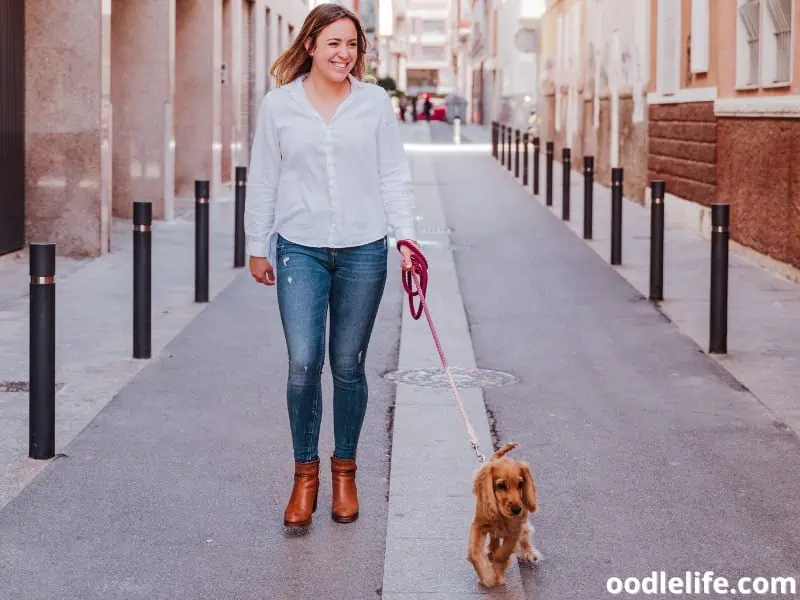
Daily physical exercise is crucial for your dog’s overall health and happiness. A lack of exercise can lead to obesity, lethargy, and even destructive behaviors. To keep your dog’s tail wagging, incorporate regular walks, runs, or playtime at the park.
You can also try games like fetch or tug-of-war – these interactive activities will keep your dog engaged and help burn off excess energy.
But don’t forget about their mental stimulation! Just like us humans, dogs need to flex their brain muscles too. Mental exercises keep your dog’s grey matter in tip-top shape and help alleviate boredom – a common cause of misbehavior. Puzzle toys, hide-and-seek games, and basic training exercises are excellent ways to work their noggins.
Bonus: Smarty-pants dogs tend to show off their good manners more often!
As you address your dog’s exercise needs, pay attention to their fitness level and potential limitations. For instance, an elderly dog may require low-impact activities like swimming, while an energetic puppy might appreciate a challenging agility course. And remember, when in doubt, consult your vet for guidance on suitable exercises based on your dog’s age, breed, and health.
Finally, a pro tip: Consistency is key! Establishing a daily exercise routine and maintaining it will go a long way in transforming your rambunctious fur child into the well-behaved companion you’ve always dreamed of. Now, go ahead and enjoy that game of fetch or leisurely stroll with your pooch – they deserve it!
Remember, a well-exercised dog is a good dog! So get out there and start exploring new ways to address both the physical and mental exercise needs of your canine companion. Your efforts will be rewarded with a calmer, happier best friend.
Training Techniques and Obedience Skills
Let’s talk about how to teach your unruly canine companion some manners! Training techniques and obedience skills are essential to regain control and establish a strong bond with your dog. You’ll be amazed at how much easier life becomes when Fido listens to your commands.
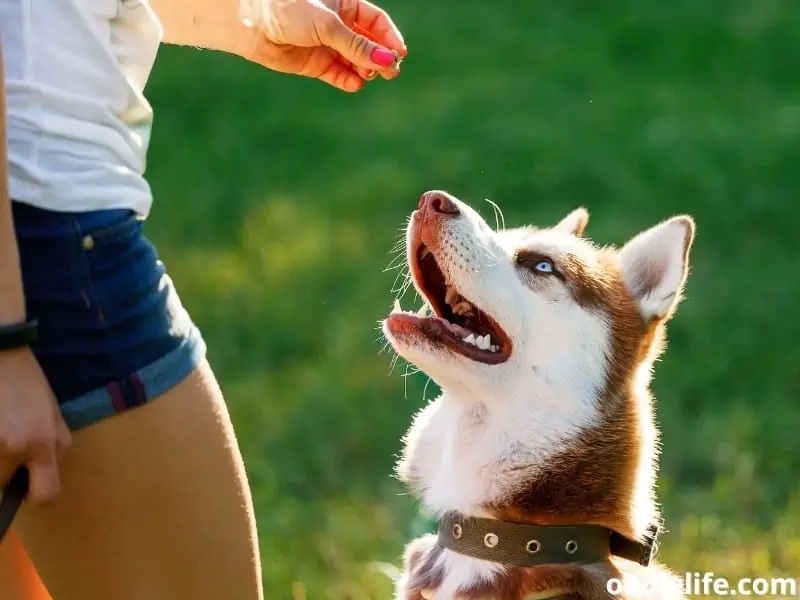
First and foremost, rewards are the secret sauce to effective dog training. Is your dog food motivated? Great, use those mouth-watering treats to your advantage!
Prefer toys or praise? That works, too! The key is finding out what motivates your pup and using it to reinforce good behavior.
Remember to keep the treats small and healthy to avoid any weight gain.
Let’s start with the basics, shall we? The “sit” command is one of the easiest for dogs to learn, and it’s a great foundation for further training. Hold a treat near your dog’s nose, then slowly move it upwards and over their head.
As their nose follows the treat, their behind should naturally move toward the ground. The moment they sit, say “sit” and give them the treat. Rinse and repeat until your dog reliably sits on command.
Once your dog has mastered “sit,” it’s time to teach them some other essential basic obedience commands, such as “stay,” “down,” and “come.” Similar to the “sit” command, use treats, toys, or praise as rewards to positively reinforce the desired behavior. Consistency and patience are key here – Rome wasn’t built in a day, and your dog won’t learn everything overnight, either.
Attention is another critical aspect of training. You want to teach your dog to focus on you, especially when distractions are present. Start by saying their name in a cheerful tone and rewarding their attention with a treat.
Practice this in various environments, gradually increasing the level of distractions. Soon, your dog will be laser-focused on you, ready to respond to your commands.
Overall, the most important thing when it comes to training your dog is to maintain a consistent and clear approach, coupled with a dash of humor and a whole lot of love. Remember, training should be fun and enjoyable for both you and your furry friend. As you work together, you’ll find that “Help! My dog is out of control!” becomes a thing of the past.
Happy training!
Managing Anxiety and Stress
Just like us humans, dogs too may experience anxiety and stress. Sometimes, it can manifest as seemingly out-of-control behavior. Not to worry, it isn’t the end of the world!
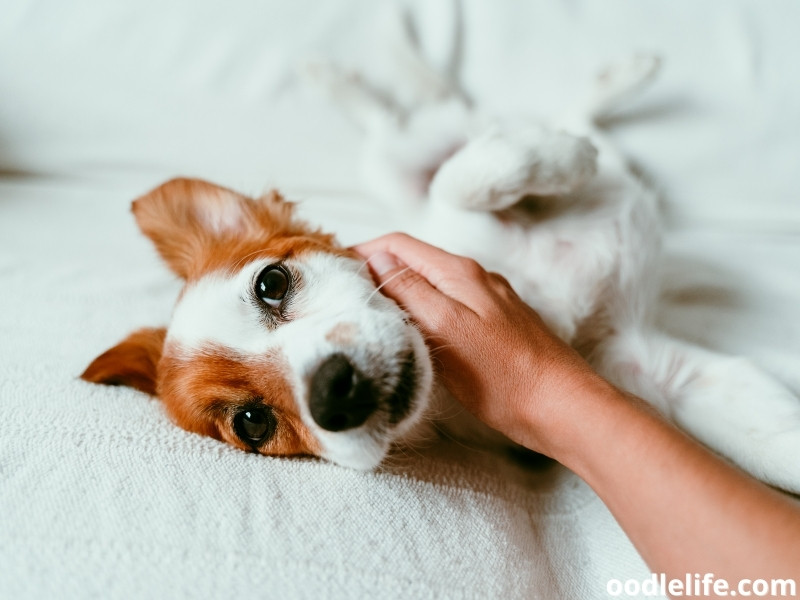
Let’s dive into some possible solutions for managing your furry friend’s anxiety and stress.
First and foremost, create a calm and secure environment for your dog. By ensuring consistency in daily routines and providing them with a comfortable, familiar space, you’re already minimizing the stress factors. You may also want to try some relaxation techniques like gentle petting, soothing sounds, or aromatherapy.
Separation anxiety is a common issue faced by dogs, particularly when left alone for extended periods. To combat this, try gradually increasing the amount of time you’re apart from your dog. Start with short separations and gradually work your way up, always rewarding them for staying calm during your absence.
Fear and anxiety can be triggered by various factors, such as loud noises or unfamiliar situations. Observe your dog to identify the potential triggers and help them build a positive association with those triggers by using treats, praises, and toys. Remember to be patient and consistent in your approach!
In some cases, consulting with a veterinarian might be necessary, especially if your dog’s anxiety and stress levels seem too high or persist. They can evaluate your dog’s situation, rule out any underlying health issues, and recommend appropriate medications or treatments such as anti-anxiety medications or pheromone diffusers if necessary.
It’s also essential to consider your pet’s mental stimulation and exercise needs. Daily walks and playtime can go a long way in releasing pent-up energy and keeping stress levels at bay. Plus, it’s a great bonding opportunity for you and your four-legged buddy!
So, in essence, managing your dog’s anxiety and stress levels involves a blend of environmental adjustments, gradual exposure, positive reinforcement, consultation when needed, and of course, heaps of patience. And who knows? You might even pick up a few relaxation techniques for yourself in the process!
Correcting Aggression and Bad Habits
Is your dog behaving like a wild beast unleashed? Fear not, fellow dog enthusiast; we’ve got some tips to get your furry companion back on the right track. We’ll be bringing that “inner angel” out in no time!
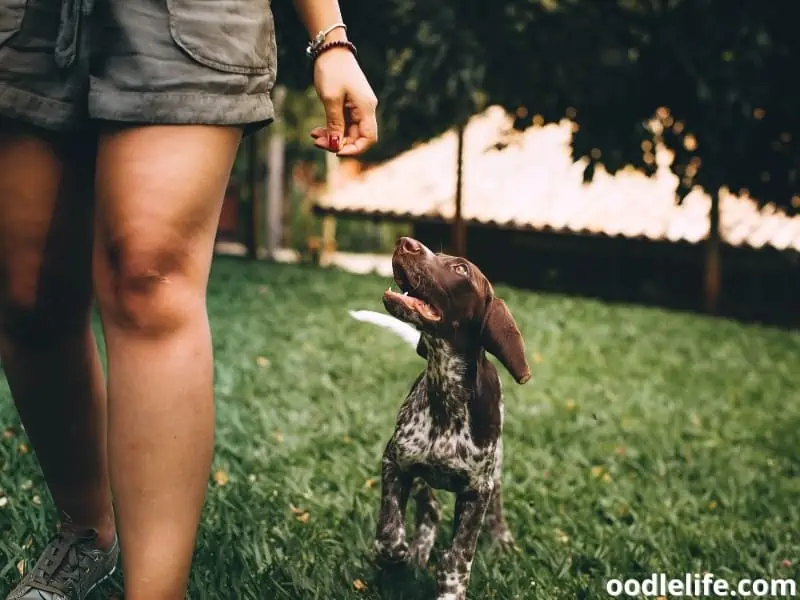
First things first, let’s address the heart of the matter: aggression. Aggression in dogs might be due to a mixture of energy, stress, and frustration. An easy fix to tackling energy-based aggression?
Regular exercise for your canine sidekick! Walks, runs, or even a simple game of fetch should help expend some of that extra enthusiasm. A tired dog is a calmer dog, after all.
Ignoring your dog’s negative behavior can be an effective strategy to change their actions for the better. If your dog starts barking or jumping around the house like a possessed bouncing ball, try to remain calm and composed. Look away, avoid eye contact, and keep your arms crossed – don’t feed the beast!
By not reacting to their tactics, your dog will eventually realize that demanding attention through negative behavior is not a fruitful endeavor.
Old habits die hard, but when it comes to bad habits in dogs, consistency and patience is key. If your pup loves to dig up your prized daffodils, for example, monitor their playtime in the yard and gently redirect their attention when they inevitably start excavating your beloved blooms. Remember, Rome wasn’t trained in a day, so don’t expect miracles overnight.
Stress and frustration can play a significant role in your dog’s misbehavior. Identifying the cause is crucial and will take some canine detective work on your part. Is the neighbor’s cat taunting your dog through the window?
A simple close of the curtains might help ease your dog’s angst. Or perhaps your dog is begging for attention, but is only met with disinterest. Spending more quality time with your dog could significantly improve their demeanor.
All in all, transforming your destructive dog into a well-behaved angel requires consistency, patience, and a little bit of humor. It’s crucial to figure out the root of their unruly behavior and to implement the appropriate solutions. To quote a cliché, but oh-so-true statement, “the journey of a thousand miles begins with a single… bark?”
Leash Training and Handling Techniques
Leash training is key to maintaining control and having enjoyable walks with your furry friend. But fear not, with a few techniques up your sleeve, you’ll be handling your dog like a pro in no time. So, strap on your favorite walking shoes, and let’s dive into the world of leash training.
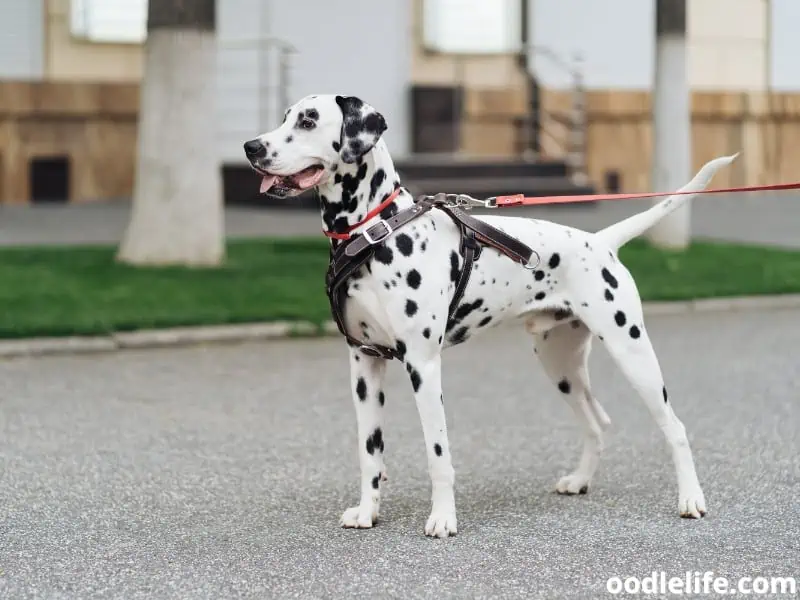
First, the right equipment can make a world of difference. Instead of a standard collar, opt for a harness (wink wink) that will evenly distribute pressure and help prevent your pooch from pulling. Make sure the harness and leash are both snug, but comfortable – you don’t want to cut off any circulation or cause discomfort.
Now that you’re all set, it’s time to teach your dog some basic obedience skills. Start with the tried-and-true “sit” command. When your dog is sitting calmly, reward them with a treat and attach the leash.
This sets the tone that calm behavior is required before any walk commences.
During the walk, maintain control by keeping a short leash and your dog close to your side. This not only helps prevent lunging at passing distractions but also reinforces that you, dear handler, are in control of the walk. Should Mr. Fluffybutt decide to lunge or pull, simply change direction or stop walking until he calms down.
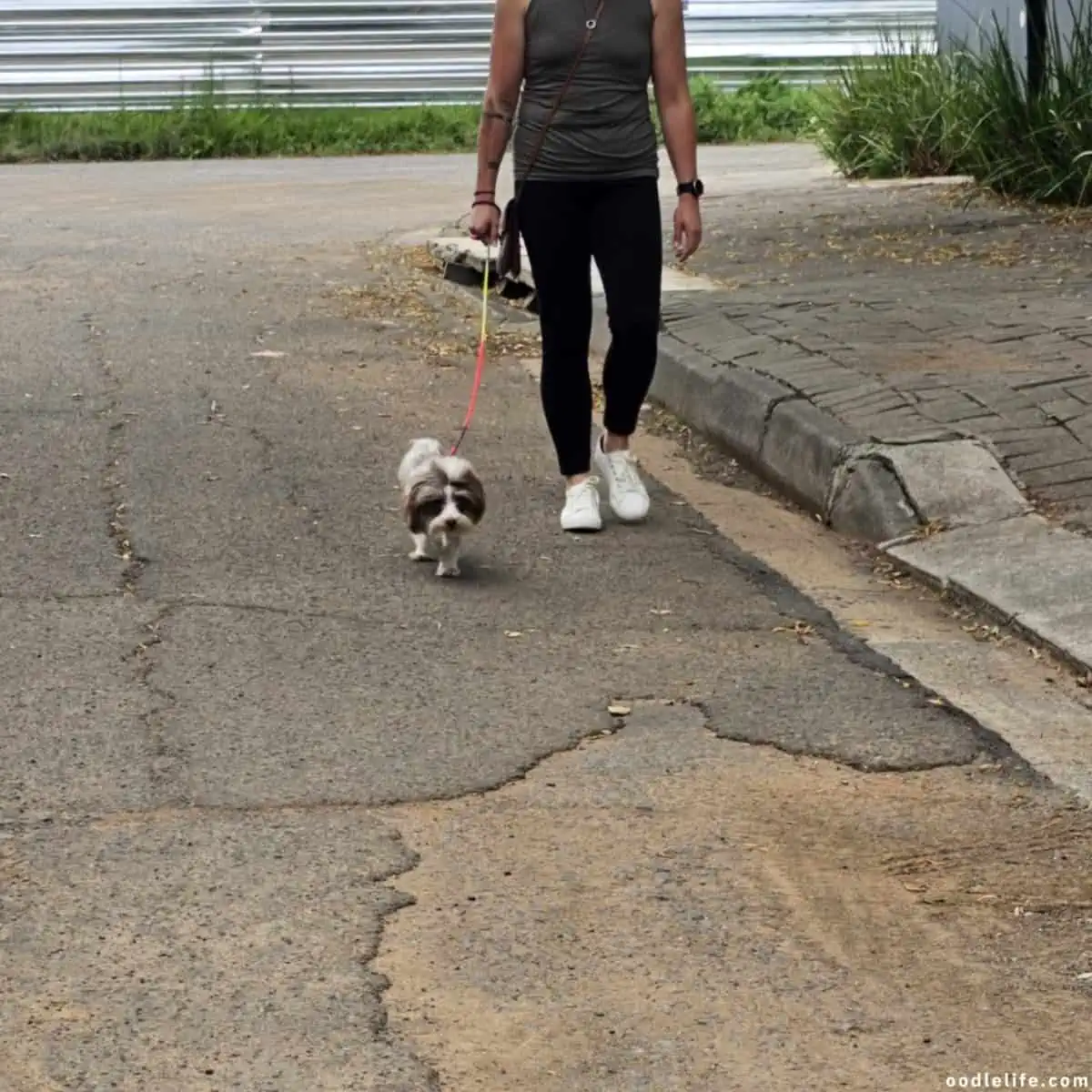
Introduce new techniques to help improve your dog’s leash manners. The “look at me” command comes in handy when you need to redirect their attention. For instance, when you see a squirrel up ahead, have your dog look at you and reward them.
This reminds them that focusing on you is more rewarding than chasing furry critters.
Finally, remember that consistency is crucial while implementing these handling techniques. If you give in to the occasional tug-of-war or indulge in sporadic lunging, you may just end up with another out-of-control pupperoni.
And so, as we traipse through this glorious adventure called leash training and handling, just remember that patience, consistency, and humor will serve you well. In time, you and your dog will be strutting in perfect harmony, turning heads and inspiring envy in fellow dog walkers.
Dealing with Excitement and Guests
Ah, the doorbell rings, and your dog instantly turns into a furry tornado of excitement. We all want our canine companions to be social and friendly, but sometimes their enthusiasm for meeting new guests can be a bit too much. Don’t worry – with a little calm, patience, and these tried-and-true strategies, you can help your dog tame their over-the-top excitement when guests come to visit.

First things first, you’ve got to teach your dog that remaining calm is the key to attention. Before your guests arrive, practice some basic obedience commands like “sit” and “stay” with your pooch, rewarding them with tasty treats or affection when they succeed. This way, they’ll learn associating calm behavior with positive outcomes, which is a win-win for everyone!
Now, let’s put this into practice. When your guests knock on the door, have your dog leash to keep them in check, and then immediately command them to “sit.” Only once your dog is sitting calmly should you open the door and greet your visitors.
Keep in mind that consistency is crucial, so make this a routine for all guests – even if it’s just the pizza delivery person.
Sometimes, though, sitting simply isn’t enough to contain sheer excitement. In this case, you might want to try a “time-out” to help your dog regain control. Ask your guests to ignore your canine friend for a few minutes, not making any eye contact or interaction.
This brief pause will give your dog a chance to collect themselves and understand that wild behavior isn’t rewarded with attention.
But what if your dog is super-social and insists on greeting each guest with sloppy kisses and cuddles? Introduce a simple, neutral toy for your dog to hold in their mouth when greeting new arrivals. This can help redirect their energy and give them something to focus on other than jumping all over your friends and family.
Lastly, remember to have a sense of humor and patience during this process. Dogs are incredibly perceptive and if you’re stressed during guest arrivals, they’ll pick up on it. So, take a deep breath, remember these techniques, and maintain a confident, knowledgeable, and clear mindset.
In no time, your dog will learn to stay calm and collected when guests visit, making each interaction a more pleasant experience for all parties involved.
Special Considerations for Older and Younger Dogs
When it comes to handling out-of-control dogs, it’s essential to take into consideration the age of your canine companion. Both older and younger dogs have their own set of quirks and challenges that require some extra patience and understanding.

Starting with the younger dogs, these little bundles of energy are often full of excitement and curiosity. They typically require more attention, training, and exercise to manage their high energy levels. One helpful tip for managing a hyper youngster is to establish a consistent daily routine that includes plenty of physical and mental stimulation.
This could involve regular walks, playtime, and puzzle toys to keep them busy and mentally engaged.
Aging dogs, on the other hand, might experience some health issues that could contribute to their unruly behavior. For instance, cognitive decline and hearing loss can make it more difficult for an older dog to understand and follow commands. In these cases, it’s crucial to approach training with extra patience and sensitivity.
Additionally, certain health problems like arthritis, vision loss, or other age-related concerns might require adapting training methods and expectations.
Here are some special considerations for older and younger dogs:
- Younger dogs:
- More energetic and curious.
- Require more attention, exercise, and mental stimulation.
- Daily routine is essential for managing energy levels.
- Older dogs:
- More susceptible to health issues and cognitive decline.
- Patience and sensitivity is key in training.
- Adapt training methods to accommodate age-related limitations.
In both scenarios, it’s important to remember that every dog is unique, so a one-size-fits-all approach to training might not be as effective as catering to their specific needs. For instance, an older dog might appreciate shorter, low-impact training sessions, while a younger dog might benefit from more high-energy, engaging activities.
Ultimately, successful training involves understanding your dog’s needs and adjusting your approach accordingly. An older dog might need some extra hugs and patience, and a younger dog could require a bit more guidance and firm boundaries. Finding the right balance will help turn your out-of-control pup into a well-behaved companion – and who knows?
You might even earn yourself a few doggy kisses for your efforts!
Seeking Guidance from Professionals
When your dog seems out of control, it’s best not to panic. Instead, take a deep breath and consult a professional, like a veterinarian or a professional dog trainer. They can provide valuable insights into determining the causes of your dog’s behavior and suggest suitable remedies.

For instance, your dog’s out-of-control demeanor could be attributed to health issues or an underlying medical condition. In this case, a visit to the veterinarian is crucial. They will diagnose the issue, prescribe medications (if needed), and offer advice on managing your dog’s condition.
On the other hand, if your pooch’s behavior is primarily a result of disobedience or lack of training, a professional dog trainer might be just the ticket. Dog trainers can help teach your furry friend discipline and well-mannered behaviors, turning your canine chaos into a model of canine calm (say that five times fast).
Remember, dogs can be like toddlers sometimes: curious, mischievous, and stubborn. But, similar to parenting, seeking professional advice and guidance can make a world of difference in helping you take control of the situation. The sooner you consult with a professional, the sooner your dog can be on the path to better behavior.
So don’t hesitate to pick up the phone and make an appointment.
And hey, while you’re at it, why not rustle up some extra doggy treats for good measure – your pup might be more inclined to cooperate if they know there’s a tasty reward waiting for them. Happy training!